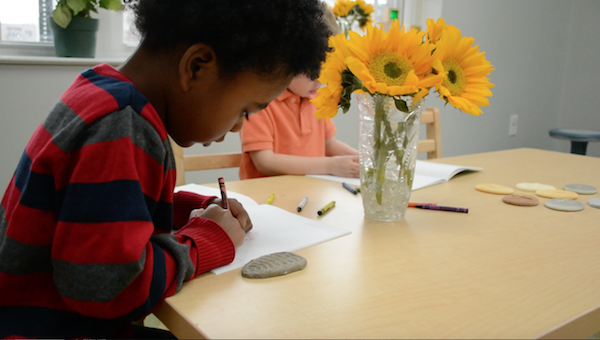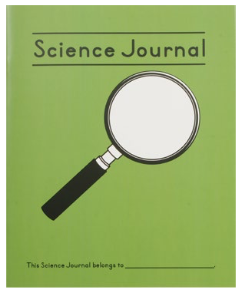Make Your Own Science Journal
Encourage Young Children to Tap into Their Innate Skills

As you know, in a Connect4Learning classroom, children use the Connect4Learning Science Journal to record their experiences. Share the following activity with families so they can encourage their children to continue the fun science learning at home with their own homemade science journals!
ACTIVITY: Make Your Own Science Journal
Did you know children are natural scientists? They are! They observe and compare objects, actions, and interactions starting in infancy. In preschool, we help build their science skills and teach them how to record what they see or experience, like scientists do.
First, make sure you have the Connect4Learning Alphabet Chart handy. (download here)
Your child may be accustomed to using her Connect4Learning Science Journal in the classroom. But, her scientific discoveries and explorations are certainly continuing while at home! Gather a few household items to help your child make her own DIY science journal!
In this activity, your child will build both science and literacy skills: observing and analyzing an object, thinking about and composing something to say or write about the object, figuring out which alphabet letters to use to represent the words, and writing from left to right.
Throughout this activity provide as much help as your child needs. These skills can be challenging, so be supportive and encouraging at all times!
Construct your journal. Staple together some pieces of paper like a book. Use whatever paper you have available.
Create the cover. Label the front cover Science Journal. At the bottom, write Name with a line next to it for your child to write his name.
Gather materials. Collect a few interesting items from the kitchen or outside, such as fruits, vegetables, rocks, leaves, acorns, etc.
Discuss and observe. Talk with your child about the objects, observing them closely.
Name their colors and shapes
Use lots of sensory words, such as smooth, bumpy, cold, warm, soft, hard, big, small
Encourage artistry! Ask your child to draw a picture of one or more objects on a journal page.
Discuss the creation. Invite your child to tell you something about his picture. Give some examples:
- These are rocks and leaves. We found them on our walk outside today.
- These are fruits. My favorite is grapes.
Take notes. Write down what your child says on the science journal page, alongside his drawing.
Invite her participation. As you write, ask your child to tell you the first letter in some of the words, emphasizing beginning sounds: R-r-r-r-rock. What letter makes the /r/ sound in rock?
Acknowledge that literacy is a process! It’s okay if your child doesn’t know the beginning letters of some words. Just say it yourself and continue writing what he has dictated.
Encourage writing. If your child wants to write some letters or words himself, that is wonderful! Be sure to have the alphabet chart in view to help your child remember and write some letters.
Let your child lead. Follow your child’s lead to make this a fun activity.
Mark the date. At school, the children have date stamps to mark the date for each science journal entry. If you don’t have a date stamp at home, show your child how you write the date on the journal page.

Want to extend the learning?
As your child observes nature and objects, encourage her to make a new entry into the science journal. Follow the same procedures as before, encouraging drawing first and then composing a sentence describing what she observed. Help her write her ideas as needed. Don’t forget to record the date!



